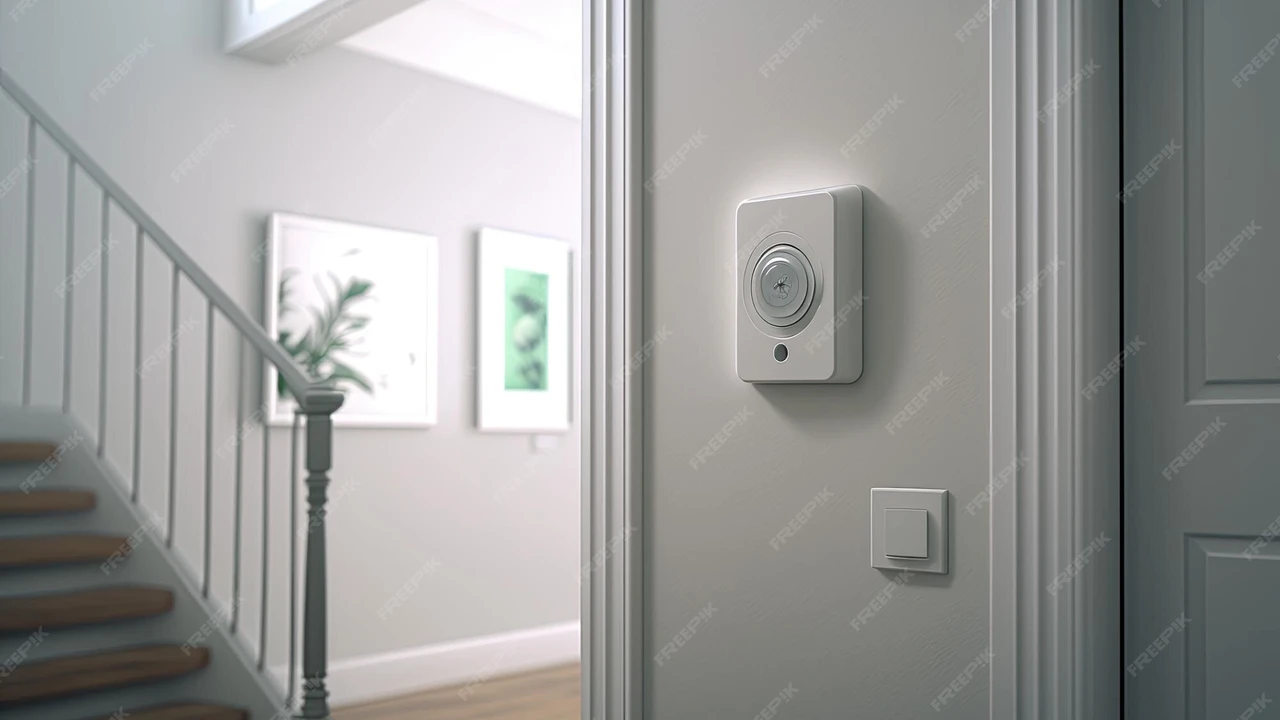Access Control Systems for Educational Campuses
Discover comprehensive access control solutions tailored for educational campuses ensuring student and staff safety.

Access Control Systems for Educational Campuses
The Growing Need for Robust Campus Security
Educational campuses, from bustling universities to K-12 schools, face unique security challenges. They are open environments, designed for learning and collaboration, yet they must also protect thousands of students, faculty, and staff, as well as valuable assets. The traditional approach of relying solely on locks and keys is no longer sufficient in an era where security threats are increasingly complex and diverse. This is where advanced access control systems step in, offering a multi-layered defense that balances openness with necessary protection. Think about it: a university campus might have dozens of buildings, each with multiple entry points, classrooms, labs, dormitories, and administrative offices. A K-12 school needs to manage student drop-off and pick-up, visitor access, and after-school activities, all while maintaining a secure perimeter. The sheer scale and variety of access needs demand a sophisticated, yet user-friendly, solution. We're talking about systems that can grant or deny entry based on identity, time, and location, all while providing a detailed audit trail.Understanding the Core Components of Campus Access Control
At its heart, an access control system for an educational campus is a network of hardware and software designed to manage who goes where and when. It's much more than just a fancy lock. Let's break down the key components:Access Control Readers and Credentials for Campus Entry
This is where the interaction happens. Readers are the devices that scan credentials to grant or deny access. Credentials are what individuals use to identify themselves. For campuses, the options are varied:- Key Cards and Fobs: These are still very common. Students and staff carry a card or fob that they tap or swipe against a reader. They're relatively inexpensive to produce and manage, but can be lost or stolen.
- Mobile Credentials: Increasingly popular, mobile credentials allow smartphones to act as access cards. This is super convenient for students who always have their phones with them. It also offers enhanced security features like encryption and remote revocation.
- Biometric Readers: Fingerprint, facial recognition, or iris scanners offer the highest level of security as they rely on unique biological traits. While more expensive, they eliminate the risk of lost or stolen credentials. They're often used for high-security areas like data centers or research labs within a campus.
- PIN Pads: Sometimes used in conjunction with other credentials or for less critical access points, PIN pads require users to enter a code.
Electronic Locks and Door Hardware for Campus Security
Once a credential is authenticated, the system needs to physically unlock the door. This involves a range of electronic locking mechanisms:- Electric Strikes: These replace the standard strike plate on a door frame and are electrically controlled to release the latch.
- Magnetic Locks (Maglocks): Powerful electromagnets hold the door shut. When power is cut (either by the access control system or in an emergency), the door releases.
- Electrified Lever Sets and Mortise Locks: These are integrated locksets that can be electronically controlled, often with a mechanical override for emergencies.
Access Control Panels and Controllers for Centralized Management
These are the brains of the operation. Controllers receive signals from readers, verify credentials against a database, and then send commands to unlock doors. Panels manage multiple controllers and communicate with the central software. Modern systems often use IP-based controllers, making installation and networking much simpler.Access Control Software for Campus Administration
This is where administrators manage the entire system. The software allows them to:- Enroll and revoke credentials for students, faculty, and visitors.
- Set access schedules (e.g., a lab only accessible to certain students during specific hours).
- Monitor real-time access events and alarms.
- Generate audit trails and reports for compliance and investigations.
- Integrate with other security systems like video surveillance and intrusion detection.
Key Features and Benefits of Campus Access Control Systems
Implementing a well-designed access control system on an educational campus brings a multitude of benefits, far beyond simply locking doors.Enhanced Safety and Security for Students and Staff
This is the primary driver. By controlling who can enter buildings and specific areas, campuses can significantly reduce the risk of unauthorized individuals gaining access. This is particularly vital for dormitories, sensitive research facilities, and areas where young children are present. In an emergency, the system can be used for lockdown procedures, quickly securing all entry points.Streamlined Operations and Reduced Administrative Burden
Imagine managing thousands of physical keys. The cost of rekeying buildings when keys are lost or staff turnover is immense. Access control systems eliminate this. Credentials can be issued and revoked instantly, saving time and money. Integration with student information systems (SIS) can automate the enrollment and de-provisioning of access rights.Improved Accountability and Audit Trails for Campus Incidents
Every access attempt, whether granted or denied, is logged. This creates an invaluable audit trail that can be used to investigate incidents, track movements, and ensure compliance with security policies. If something goes missing from a lab, administrators can quickly see who accessed the area around that time.Flexibility and Scalability for Growing Educational Institutions
Campuses are dynamic environments. New buildings are constructed, departments move, and student populations fluctuate. Modern access control systems are designed to be flexible and scalable, allowing for easy expansion and adaptation to changing needs without a complete overhaul.Integration with Other Campus Security Systems
The true power of an access control system is realized when it integrates seamlessly with other security technologies. This creates a unified security platform:- Video Surveillance: When an access event occurs, the system can trigger a camera to record the activity at that door, providing visual verification.
- Intrusion Detection: If an unauthorized entry is detected, the access control system can automatically lock down surrounding areas.
- Emergency Notification Systems: In a crisis, the access control system can be linked to mass notification systems to alert everyone on campus.
- Visitor Management Systems: Streamline visitor check-in, issue temporary credentials, and track visitor movements.
Choosing the Right Access Control System for Your Campus
Selecting an access control system is a significant investment, and it's crucial to choose one that aligns with your campus's specific needs, budget, and long-term goals. Here are some key considerations:Assessing Campus Size and Specific Security Requirements
A small K-12 school will have different needs than a sprawling university campus. Consider the number of buildings, entry points, and users. Identify high-security areas versus general access zones. What are the specific threats you're trying to mitigate?Budgetary Constraints and Total Cost of Ownership
Beyond the initial purchase and installation costs, consider ongoing expenses like software licenses, maintenance, and credential replacement. Cloud-based systems often have a lower upfront cost but recurring subscription fees.Integration Capabilities with Existing Campus Infrastructure
Will the new system play nicely with your existing video surveillance, HR, or student information systems? Seamless integration is key to maximizing efficiency and avoiding data silos.Scalability and Future Expansion Considerations
Choose a system that can grow with your campus. You don't want to replace the entire system in a few years because it can't handle new buildings or increased user numbers.Vendor Reputation and Support Services for Educational Clients
Look for vendors with a proven track record in the education sector. Excellent customer support, training, and ongoing maintenance are critical for long-term success.Recommended Access Control Products for Educational Campuses
Let's dive into some specific products and solutions that are well-suited for educational environments, considering various campus sizes and security needs. Please note that pricing can vary significantly based on the scale of deployment, specific features, and regional factors. The prices mentioned are approximate and for illustrative purposes.1. Genetec Security Center for Large University Campuses
Overview: Genetec Security Center is an enterprise-grade, unified security platform that seamlessly blends access control (Synergis), video surveillance (Omnicast), and license plate recognition (AutoVu) into a single interface. It's designed for large, complex environments like major universities with multiple buildings, diverse user groups, and high-security requirements.
Key Features for Campuses:
- Unified Platform: Manage access control, video, and other security functions from one console, simplifying operations.
- Scalability: Built to handle thousands of readers and tens of thousands of users, making it ideal for large universities.
- Advanced Credential Management: Supports a wide range of credentials, including mobile, smart cards, and biometrics.
- Granular Access Control: Define highly specific access rules based on user roles, time schedules, and locations.
- Integration Capabilities: Extensive API for integration with student information systems, HR databases, and emergency notification platforms.
- Federated Architecture: Allows multiple independent security systems (e.g., different campuses or departments) to be managed centrally while maintaining local autonomy.
Typical Use Cases: Securing dormitories, research labs, administrative buildings, athletic facilities, and parking garages across a large university campus. Enabling real-time monitoring of access events linked to video footage for rapid incident response.
Comparison: Compared to more basic systems, Genetec offers unparalleled depth in features and integration. It's a significant investment but provides a future-proof solution for complex security needs. Its strength lies in its true unification, not just integration, of different security modules.
Approximate Pricing: Starting from tens of thousands of dollars for software licenses and hardware, easily scaling into hundreds of thousands or even millions for large-scale deployments, depending on the number of doors, cameras, and features. Annual maintenance and support fees are also a factor.
2. LenelS2 OnGuard for Mid-to-Large Educational Institutions
Overview: LenelS2 OnGuard is another powerful, enterprise-level access control system widely used in educational settings. It offers a robust and reliable solution for managing access, alarms, and identity across a campus. While it can integrate with video, its core strength is its comprehensive access control capabilities.
Key Features for Campuses:
- Comprehensive Access Control: Robust management of cardholders, access levels, schedules, and door groups.
- Visitor Management Module: Streamline visitor registration, badge printing, and tracking.
- Alarm Monitoring: Centralized monitoring and management of all security alarms, including access violations and intrusion detection.
- Open Architecture: Supports a wide range of third-party hardware and software integrations, offering flexibility.
- Mobile Access Support: Allows for the use of mobile credentials for convenient and secure entry.
- Compliance Reporting: Generate detailed reports for auditing and regulatory compliance.
Typical Use Cases: Securing academic buildings, libraries, student centers, and administrative offices. Managing access for faculty, staff, students, and contractors. Implementing lockdown procedures and emergency response protocols.
Comparison: OnGuard is known for its reliability and extensive feature set, making it a strong contender for campuses that prioritize robust access control. It offers a highly customizable solution, often requiring professional installation and configuration. It competes directly with Genetec for larger deployments, with a strong focus on access control as its foundation.
Approximate Pricing: Similar to Genetec, OnGuard deployments can range from tens of thousands to hundreds of thousands of dollars, depending on the scale and complexity. Software licenses, hardware (controllers, readers, locks), and installation services contribute to the overall cost.
3. Brivo Access for Cloud-Based Campus Security
Overview: Brivo Access is a leading cloud-based access control solution, making it an excellent choice for campuses looking for flexibility, remote management, and reduced on-premise IT infrastructure. It's particularly appealing for smaller to mid-sized campuses or those with distributed locations.
Key Features for Campuses:
- Cloud-Native Platform: Manage your entire access control system from anywhere with an internet connection, via a web browser or mobile app.
- Scalability and Ease of Deployment: Simple to add new doors and users as the campus grows, without complex server management.
- Mobile Pass: Offers a seamless mobile credential experience for students and staff.
- Open API: Facilitates integration with other cloud-based systems, including video surveillance (e.g., Eagle Eye Networks) and visitor management.
- Automatic Updates: Software updates are handled automatically in the cloud, ensuring you always have the latest features and security patches.
- Reduced IT Overhead: No need to maintain on-premise servers or complex network configurations.
Typical Use Cases: Securing individual school buildings, smaller college campuses, or specific departments within a larger university. Ideal for managing access to classrooms, offices, and common areas. Excellent for campuses with limited IT resources or a preference for subscription-based services.
Comparison: Brivo stands out for its cloud-first approach, offering significant advantages in terms of ease of management, scalability, and lower upfront infrastructure costs compared to traditional on-premise systems. While it might not have the same depth of highly specialized features as Genetec or LenelS2 for extremely complex, large-scale integrations, its simplicity and accessibility are major draws for many educational institutions.
Approximate Pricing: Brivo typically operates on a subscription model, with costs based on the number of doors and users. Hardware (controllers, readers) is purchased upfront. Expect monthly fees ranging from $50-$150+ per door, plus initial hardware costs which can range from a few hundred to a couple of thousand dollars per door, depending on the lock type and reader chosen.
4. Paxton Net2 for K-12 Schools and Smaller Colleges
Overview: Paxton Net2 is a popular and user-friendly access control system, particularly well-suited for K-12 schools and smaller college campuses. It offers a good balance of features, ease of use, and affordability, making it accessible for institutions with more modest budgets and IT capabilities.
Key Features for Campuses:
- User-Friendly Software: Intuitive interface makes it easy for school administrators to manage users, access levels, and events.
- Scalable System: Can be expanded from a few doors to hundreds, accommodating growth.
- Event Reporting: Provides clear logs of who entered where and when, useful for incident investigation.
- Integration with Intruder Alarms: Can be linked with alarm systems for a more comprehensive security solution.
- Energy Saving Features: Can be configured to turn off lights or heating in unoccupied rooms.
- Visitor Management: Basic visitor management capabilities to issue temporary access.
Typical Use Cases: Securing school entrances, classrooms, staff rooms, and gymnasiums. Managing access for students, teachers, and administrative staff. Implementing after-hours access restrictions for specific areas.
Comparison: Paxton Net2 is often praised for its simplicity and reliability. It's less complex than enterprise-level systems like Genetec or LenelS2, making it easier for non-specialized staff to operate. It offers a robust feature set for its price point and is a strong contender for schools that need effective access control without the overhead of a highly complex system.
Approximate Pricing: Paxton Net2 is typically an on-premise solution with an upfront software license fee and hardware costs. A system for a small school (e.g., 10-20 doors) might range from $10,000 to $30,000+, including hardware and installation. Larger deployments would scale upwards.
5. Salto Systems for Flexible and Wireless Campus Access
Overview: Salto Systems specializes in wire-free and wireless access control solutions, which can be a game-changer for campuses, especially older buildings where running new wiring is difficult or expensive. Their solutions offer flexibility and advanced features without the need for extensive cabling.
Key Features for Campuses:
- Wireless and Wire-Free Locks: Reduces installation costs and complexity, ideal for retrofitting existing buildings.
- Virtual Network (SVN) Technology: Allows for offline locks to be updated with access rights and audit trails via user cards, providing a robust and secure solution without constant online connectivity for every door.
- Mobile Access: Supports mobile credentials for smartphone-based entry.
- Energy Efficient: Wireless locks are battery-powered, with long battery life.
- Scalability: Easily expand the system by adding more wireless locks.
- Integration: Can integrate with other campus management systems.
Typical Use Cases: Securing dorm rooms, faculty offices, classrooms in historic buildings, and areas where traditional wired access control is impractical. Providing flexible access for temporary staff or event attendees.
Comparison: Salto's unique selling proposition is its strong focus on wireless and wire-free solutions, which sets it apart from many competitors. This makes it incredibly cost-effective for installations where trenching or extensive wiring is prohibitive. While it might require a slightly different approach to network management (especially with SVN), the benefits in terms of installation flexibility are significant.
Approximate Pricing: Salto's pricing can vary widely depending on the type of wireless lock chosen (e.g., escutcheons, cylinders, wall readers). A single wireless lock can range from $500 to $1500+, plus software licenses and installation. A campus deployment could range from tens of thousands to hundreds of thousands of dollars.
:max_bytes(150000):strip_icc()/277019-baked-pork-chops-with-cream-of-mushroom-soup-DDMFS-beauty-4x3-BG-7505-5762b731cf30447d9cbbbbbf387beafa.jpg)






